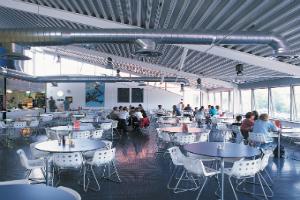 CO2 sensors can have a direct connection with the reduction of operating costs, so here are some details of this situation.
CO2 sensors can have a direct connection with the reduction of operating costs, so here are some details of this situation. by: Eng. Jorge Gaitán**
Until the recent growth of the environmentally friendly construction industry, under the LEED® program, the investment of money and time in carbon dioxide sensors in commercial constructions used to outweigh the perceived benefits. Today, building owners and designers see increasing reasons to include CO2 sensors in building design and remodeling, as costs and reliability have improved over the past two decades.
Although a certain level of CO2 is normal in buildings – humans produce it every time we exhale – high levels can cause slowness, fatigue and lower productivity in the occupants of a building. Elevated CO2 levels can also indicate that the ventilation system is not functioning properly, allowing the accumulation of high levels of pollutants such as volatile organic compounds.
CO2 sensors
When CO2 sensors are used with Demand Controlled Ventilation (DCV) systems, the amount of ventilation with fresh air is controlled based on the number of people in a place at any given time.
When occupancy increases and CO2 levels rise, the valves open to let in more fresh air. When people come out, CO2 levels drop and valves close to reduce the amount of air that needs to be heated or cooled. (Carbon dioxide is usually measured in parts per million. Levels in open spaces are generally between 400 and 450 ppm*, but it is advisable to consult the ASHARE 62 standard to calculate adequate CO2 levels).
Achieve better results
The energy savings that can be achieved with CO2-controlled ventilation are greatest in buildings that have irregular occupancy over a 24-hour period: government facilities, theaters, nightclubs and bars, restaurants, retail stores, classrooms, office buildings.
Wet areas are also ideal for implementing the controlled ventilation system on demand, as it prevents an unnecessary flow of moisture, and prevents the formation of mold.
To maximize cost control, CO2 sensors can be added to the construction automation system or a sophisticated zoning network using an intelligent direct digital controller.
The controller allows the facility manager to use a single interface to monitor CO2 levels, temperature, humidity, among other variables.
Systems that include CO2, humidity and temperature sensors in a single device minimize installation work and allow the space to be cleared from the walls.
Tips for installation
Sensors can only maintain reliable calibration if they themselves are calibrated correctly during installation. Inaccurate readings can affect occupant health and productivity, as well as construction energy consumption.
CO2 sensors should be installed in the area where people breathe to record the most accurate readings possible. The installation of CO2 sensors is not difficult, but other components, such as variable frequency drives, with their respective hardware, may be needed to control the input and output and therefore it is advisable to take them into account in the budget allocated to cover the costs of the project.
CO2 monitoring and the Demand Controlled Ventilation system can play an important role in designing an energy-efficient building and helping construction industry professionals earn LEED credits for their projects.
*Federal Energy Management Program Federal Technology Alert: Demand-Controlled Ventilation Using CO2 Sensors, 2004.
** Lennox Industries, Inc.













